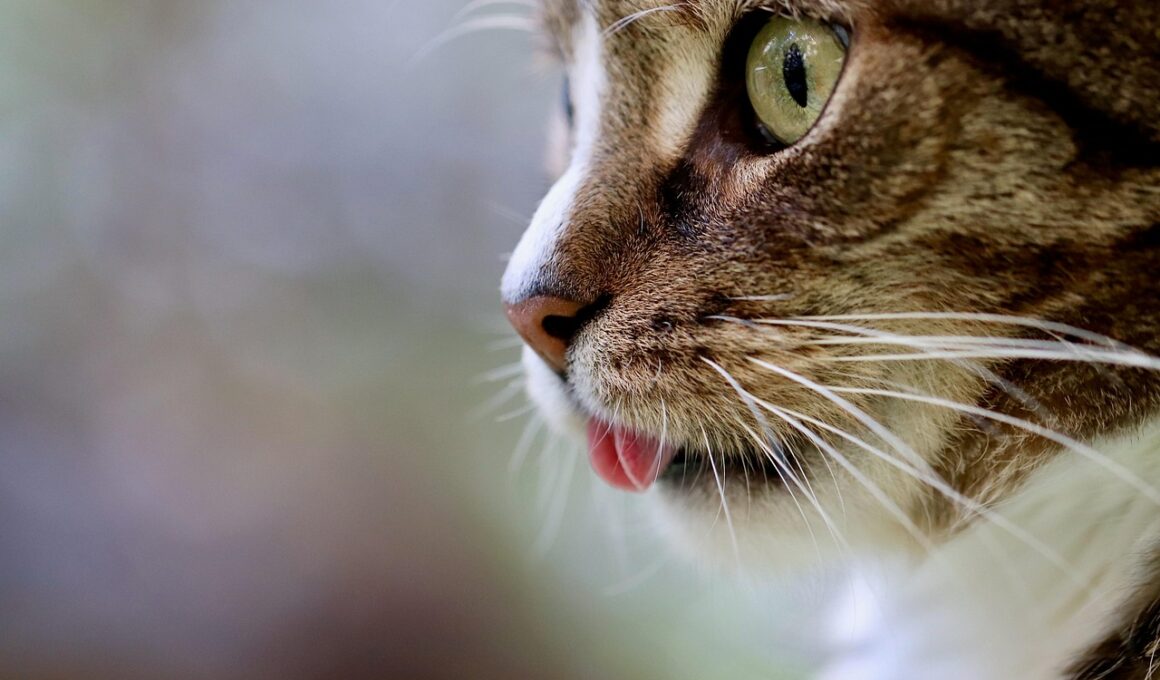The Role of Familiar Items in Easing Your Cat’s Travel Anxiety
Traveling with your cat can be a stressful experience for both of you. One effective way to ease this anxiety is by incorporating familiar items from home. Cats thrive on routine and familiarity, which helps to reduce their stress levels. By bringing items such as a beloved blanket, favorite toys, or even your cat’s usual bed, you create a sense of security for them. These items not only carry their scent but also remind them of their safe space. Additionally, familiar sounds, such as a recorded voice or soothing music, can help create a calming environment during travel. You can also try using calming sprays or diffusers that contain synthetic cat pheromones. This can further enhance your cat’s sense of safety. It’s essential to allow your cat to explore these items before traveling, so they can associate the comfort of home with these familiar objects. Remember, the smoother the travel experience, the happier your cat will be. Therefore, preparing ahead of time is crucial in making the journey less stressful. Focus on making travel a positive experience and create pleasant memories.
Before you embark on your journey, it’s vital to introduce the travel carrier as a friendly space for your cat. Place it in areas they frequent at home and fill it with their favorite blanket or toy. If they feel comfortable being in the carrier, they will associate it with safety, making future trips less daunting. Let your cat explore the carrier at their own pace, gradually creating a positive experience around it. Offering treats while they are in the carrier can reinforce good feelings about traveling. Additionally, practice takes time, so give your cat enough opportunities to adjust to their ‘travel zone’. If your cat is accustomed to the carrier, it can significantly reduce their anxiety during the actual travel. Avoid rushing them into the carrier at the last moment, as this may lead to panic and stress. Instead, consider doing multiple short trips around the neighborhood to acclimatize your cat to movement. Monitor their reactions closely to gauge their comfort levels. Incorporating this routine will help them develop a sense of trust towards the carrier and traveling itself.
Utilizing Favorite Toys
In addition to familiar items, favorite toys play an important role in minimizing your cat’s travel anxiety. Cats often find comfort in interactive toys that stimulate their natural instincts to play. Introducing these toys during your travel preparations can significantly ease their stress. Choose toys that are lightweight and easy to pack, such as balls, feathers, or plush toys. Make sure to have these toys readily available during the trip, allowing your cat to engage with them whenever they feel anxious. The distraction provided by playing can help reduce the focus on the unfamiliar surroundings. Furthermore, bringing along toys that emit familiar sounds can provide extra reassurance. Familiar scents and tactile feelings are crucial for calming your cats throughout the journey. When they engage with these toys, they not only alleviate boredom but also have an item to bring their focus back to their comfort zone. This practice extends beyond just travel—having a few favorites at home can also promote a sense of well-being even when back from the trip.
Another important aspect of preparing for your travel is ensuring your cat is comfortable wearing a collar and ID tag. If your cat gets anxious during travel and manages to escape, having a reachable tag with your information can be a lifesaver. On the other hand, it’s crucial that the collar fits well; not too tight to choke and not too loose to come off easily. Consider using a breakaway collar, designed to release under pressure, preventing choking incidents. This way, you can ensure your cat’s safety during unforeseen events. Additionally, consider microchipping your cat as a permanent identification option. It’s essential to keep the information updated with current contact details. Choose a vet-approved facility to have this done safely. Once your cat adjusts to the collar, you can also attach a comforting item or charm on it. This can cheer them up, especially during the travel journey. All these simple precautions can significantly enhance your peace of mind, knowing your furry friend can return to you, even under stressful conditions.
Creating a Calm Environment
The environment you create during the cat travel experience can greatly influence their emotional state. Ensuring the travel area is quiet, calm, and stress-free is paramount. This includes controlling loud noises, avoiding sudden movements, and maintaining a stable carrier. During travel by car, make sure to keep the air conditioning or heating comfortable for your pet. Avoid excessive vibrations by opting for a smooth road wherever possible. Remember that sudden movements in vehicles can cause unnecessary stress. It’s beneficial to play soft music that can soothe your cat’s nerves. Moreover, taking frequent breaks during long travels allows your cat to stretch, hydrate, and breathe fresh air. Reducing the duration between breaks can help minimize anxiety risks significantly. Additionally, consider keeping curtains down if you travel by plane or another mode that allows it so that your cat is not overwhelmed by outside activity. A calm space is essential; including dim lights can further contribute to a relaxed atmosphere. Plan the travel time when you know your cat is naturally inclined to rest, so they remain as relaxed as possible during transit.
Proper feeding and hydration play a significant role in travel anxiety for your cat. Just like humans, cats can feel more anxious when they are hungry or thirsty. Provide regular feeding times leading up to the trip. However, feeding them right before you leave may lead to motion sickness or discomfort. Consider adjusting their feeding schedule to ensure they will have had ample time to digest before traveling. When traveling, ensure you bring clean water and travel-friendly food options to offer during breaks. You may want to use a spill-proof travel bowl to keep their water available while on the move. Offer food in smaller portions to avoid nausea, especially on longer trips. Monitor their eating and drinking habits closely to ensure they are comfortable throughout the journey. Keeping a consistent schedule for mealtimes and breaks can minimize distress. This way, your cat begins to see travel not merely as stressful but as another routine part of life. Always carry your pet’s favorite treats to encourage them and maintain positive interactions throughout the journey, promoting an enjoyable travel experience.
Understanding Your Cat’s Behavior
Lastly, being aware of your cat’s behavior and understanding their body language can help you adeptly manage their anxiety during travel. Pay attention to signs of stress such as vocalization, increased agitation, or attempts to hide. Acknowledge these signs as essential communication from your cat about how they are feeling. Each cat is unique, and some may require extra reassurance during travel. If your cat tends to retreat or curl up, it means they’re seeking comfort. On the other hand, if they exhibit playful behavior during stressful moments, they may be seeking an outlet for their anxiety. Have a plan in place to comfort them with familiar items or toys, especially when noticing these distress signals. It’s also important to approach them calmly and gently, allowing them to retain trust in you as their companion. Taking breaks to pet and reassure your cat can significantly ease their suffering and build a stronger bond. Always be patient; your understanding can ease their travel experiences and encourage more adventures in future journeys.


